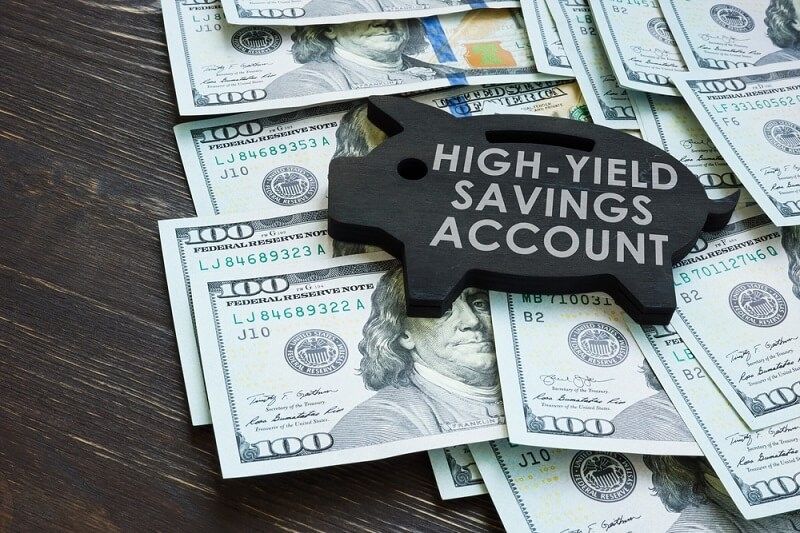How to Enroll and Use a U.S. High Yield Online Savings

In today’s fast-paced digital world, knowing how to enroll and use a U.S. online bank high yield savings account is essential for smart financial management. With interest rates rising and digital banking becoming the norm, a high yield online savings account offers a secure way to grow your money faster than traditional savings options. Whether you're looking to open an online high yield savings account or you're attempting to compare high yield savings, this article takes you through each step of the process with real value and clarity.
Why a High Yield Online Savings Account?
A high yield online savings account is a savings account provided by an online-only or hybrid bank that offers considerably higher interest rates compared to traditional brick-and-mortar banks. These tend to be fueled by reduced overhead expenses and efforts to lure digitally inclined savers. As the national average savings rate meanders around 0.50%, leading online banks provide the top online savings APY USA range of 4.00% to 5.50%.
Not only do you earn more on your idle money, but accounts also come with FDIC insurance (Federal Deposit Insurance Corporation) in many cases, which protects them as much as $250,000 per depositor, per insured bank.
Step 1: Shop Around for High Yield Savings Accounts
Prior to opening a high yield saving account online, begin by shopping around through reputable banks. Utilize comparison tools or banking review websites to find accounts with:
- Competitive APY (Annual Percentage Yield)
- Low or no fees per month
- Simple digital access
- High customer satisfaction
- FDIC insurance
Some of the highest online savings APY USA rates are now available from banks such as:
- Ally Bank
- Discover Bank
- American Express National Bank
- Marcus by Goldman Sachs
- Capital One
All of these FDIC online banks offer safe savings options, mobile access, and strong reputations.
Step 2: Know the Online Savings Account Limits
When comparing accounts, be aware of online savings account restrictions, including:
- Transfer limits: As a result of Regulation D, there are some banks that will restrict the number of withdrawals or transfers you make to six per month. But the Federal Reserve recently relaxed this rule, and most banks have changed their policies as a result.
- Minimum deposits: Some accounts have a minimum deposit to open or to qualify for the APY that is being advertised.
- Balance caps: Certain accounts provide a tiered APY depending on balance. For instance, the 5.00% APY on the first $10,000 and then less on larger balances.
Knowledge of these caps helps you to select a product that is appropriate for your saving and spending lifestyle.
Step 3: Open High Yield Saving Account Online
Opening an online savings account is easy and usually completes in under 10 minutes:
- Select your bank according to your research.
- Go to the bank's website or mobile app.
- Fill out the application, including:
- Full legal name
- Social Security Number
- Valid government ID
- U.S. address
- Employment and income details
- Fund your account via ACH transfer, wire transfer, check deposit, or mobile deposit.
Most FDIC online banks will conduct a soft credit check—not hurting your score—merely to confirm your identity.
Step 4: Start Using Your High Yield Online Savings Account
After your account is opened, you can now start making your money work! Here is how to successfully use your high yield online savings account:
- Automate your savings: Schedule the transfer automatically from your checking account either weekly or monthly.
- Use buckets or sub-savings accounts: Some banks let you allocate your funds for different things (e.g., emergency fund, vacation, car down payment).
- Reinvest interest earned: Increase the speed of your money growing by leaving earned interest in the savings account.
- Pay attention to your APY: You may see online banks changing APY amounts in conjunction with moves in the Fed rate.Stay on top of it so you're still earning a competitive rate.
A managed account earns your savings more without moving a muscle.
Key Benefits of a High Yield Online Savings Account

- Greater returns: With rates as much as 12 times greater than standard savings, you're getting more for your money.
- No bank trips: Manage it completely from your mobile device or your computer.
- Increased security: Most online accounts allow for two-factor authentication, biometric logins and include FDIC insurance.More adaptable savings products: Features such as goal setting, interest tracking, syncing with your budget are more useful.
Comparing online high yield savings accounts from a number of banks, these features are some of the key advantages offered by online banks.
Best Practices Using an Online Savings Account
To get the true advantages of your higher yield online savings account:
- Do not do too many withdrawals: Understand the limits on transactions and honor them to avoid fees or penalties.
- Do not use it like a checking account: This account is meant for saving and growing, not for repeated spending.
- Keep current on rates: APYs will fluctuate. In the event your bank falls below the national average, be prepared to transfer funds.
- Revisit goals: Revise your savings plan as your financial status changes.
Periodic checks assist you in synchronizing savings with your financial goals.
Mistakes to Avoid
Even though high yield online savings accounts are easy to open, be careful not to make these mistakes.
- Ignoring account limits: If you overdraft or exceed a certain number of monthly transfers, fees may apply.
- Not keeping records of passwords, etc.: Each of your internet accounts requires a password and often multi-factor authentication to keep them secure.
- Not taking advantage of the promotions: Some banks offer introductory bonuses for new customers for a limited-time—not taking advantage of those promotions would be a mistake.
Being diligent should keep your account performing.
Getting to Know FDIC Online Banks
Not all online banks are the same. Make sure to use FDIC online banks for the following reasons:
- $250,000 per depositor coverage: This will help protect your money in the event the bank fails.
- Better transparency: Legitimate banks will have their FDIC member number and terms listed clearly.
- History and reputation: Stick to known names or credit unions that allow online banking.
FDIC online banks allow you to feel good about your online banking with the extra confidence and federal protections attached to your money.
Compare High Yield Savings Periodically
Because rates and terms change continuously, it can be helpful to periodically compare the high yield savings accounts that you use. Here is what to compare:
- Introductory APYs vs. normal APYs
- Maintenance or withdrawal fees that would be placed in a separate interest bearing category
- Customer service reviews
- Mobile App Use
Check out review sites or finance blogs to stay updated on the highest performing high yield online savings accounts.
Best Online Savings APY USA: Who's #1 Right Now?
Although APY is variable by Federal Reserve and bank practices, using mid 2025 as a snapshot of some of the best online savings APY USA banks, the following are some of the best you can do:
- Bank Name APY Monthly Fees FDIC Insured
- Ally Bank 5.05% None Yes
- Marcus by Goldman Sachs 5.00% None Yes
- Discover Online Savings 4.90% None Yes
- CIT Bank 4.85% None Yes
- American Express 4.75% None Yes
These banks continue to be highly rated by customers for returns and reliability.
Final Thoughts: Is a High Yield Online Savings Account for You?
If you want a safe, easy means of building savings, then joining a U.S. online bank high yield savings account is one of the best financial decisions you can make. These accounts are particularly useful for:
- Emergency savings
- Holiday or vacation savings
- Home or car down payments
- Short- to medium-term savings objectives
From discovering how to sign up and take advantage of a U.S. online bank high yield savings account to learning about online savings account limitations, the secret is to remain informed, compare often, and always choose FDIC-insured banks.
With the proper strategy, your savings won't simply sit — they'll grow.
This content was created by AI

